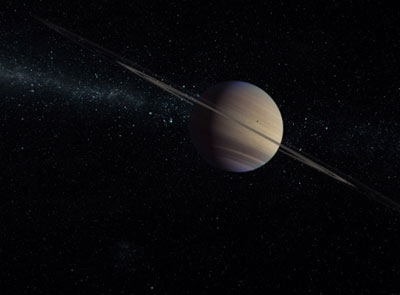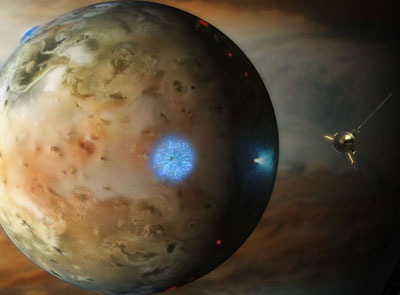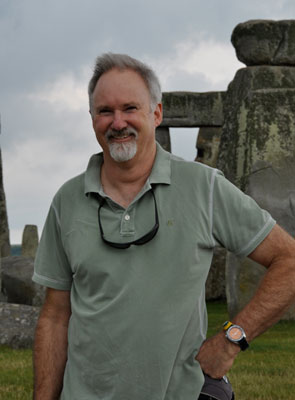Voyage to the Planets

Voyage to the Planets
Have you ever wondered what it would be like to leave Earth?To gaze back at the receding blue gem that is our home planet and go where no human has gone before? What strange sights await you?
What dangers must you avoid? With five decades of space exploration behind us, we can now begin to answer these questions.
Blast-off with Voyage to the Planets: a 6 x 50 minute Australian made documentary series exploring the pleasures and pitfalls of travel to the alien planets of our own Solar System.
Narrated by Richard Roxburgh, this series visits the planets from a very personal perspective: the individual experience of the people who have sent probes hurtling to strange worlds, and the viewpoint of any one of us who might dream of making a trip ourselves.
The series is styled in the guise of a visual guidebook, tapping into the mystery and intrigue of space exploration while providing the sort of practical information required by anyone who might like to imagine actually going there. Think of it as a kind of handbook for our cosmic neighbourhood. Voyage to the Planets recaptures the sense of wonder and romance that was so palpable during the early years of the exploration of the Moon and the planets beyond.
With a renewed push to propel humans into the heavens and the last three decades of unmanned interplanetary missions behind us, we now have the legitimacy to look deeply into the Solar System to explore what our planetary neighbours offer in terms of destinations for human exploration and discovery. As dawn breaks on a new age of manned space flight, Voyage to the Planets offers a ringside seat to the splendours of the Solar System: an astronaut's guide to whole new worlds of possibility.
Time to tour the Solar System - is your passport ready?
 Review: The series allows you to see stunning footage including images of The Galileo spacecraft over Jupiter's volcanic moon and an extremely intense and informative view of every single planet in our solar system. The series offers essential travel advice, just as you would expect when watching a travel show or documentary; leaving you to think that Earth may have more in common with the other planets, than we think.
Review: The series allows you to see stunning footage including images of The Galileo spacecraft over Jupiter's volcanic moon and an extremely intense and informative view of every single planet in our solar system. The series offers essential travel advice, just as you would expect when watching a travel show or documentary; leaving you to think that Earth may have more in common with the other planets, than we think.The first episode takes you to the Red Planet where you are overwhelmed by stunning footage of Earth's neighbour and convinced you cannot miss any of the next five episodes.
The Voyage to the Planets series has six parts and runs from Thursday, May 13 at 8.30pm on ABC1

Interview with Richard Smith
Australian filmmaker, Richard Smith, has worked at the ABC for many years on programs such as Quantum and Catalyst before going on to make award-winning documentaries such as On Jupiter, 50 Million Years Under The Sea and Crude.How is the Voyage to the Planets documentary different to other space documentaries?
Richard Smith: It's fun. This is all about the greatest feat of exploration in human history. Space travel may sound remote and futuristic. It may seem scary, and even irrelevant. But this is an intensely human activity and we're living through it. This series attempts to share some of that passion and romance.
Most people, at one time or another, dream about leaving Earth, so is this series suitable for everyone?
Richard Smith: The great thing about modern space travel is that everyone can be a part of it. All the robots we have sent out into space are expert at sending back postcards and are quite prepared to go the 'extra mile' to share their extraordinary discoveries with us.
Our travel 'hosts' are the very friendly folks at places like NASA who have sent spacecraft ahead to scout the destinations. They have all the latest and greatest information and are really keen to share their 'secret spots' with us. Even if the whole idea of climbing into a spaceship gives you the willies, it's perfectly safe to go along for the ride from the safety of your lounge room 'mission control'.
What type of practical information is presented for those who imagine going into space?
Richard Smith: Much the same as you'd get in a travel guidebook if you were doing the research for an overseas holiday: how to get there, the climate to expect when you step out of your spaceship, those pesky dangers and annoyances you need to be on the lookout for and - of course - all the big attractions and sights. We even throw in a bit about the history of the planet and its discovery so you can really appreciate the trip.
What new information and technology allowed you to create this amazing series?
Richard Smith: The most important new information and technology came from the spacecraft and the human teams behind them. Without this, there could be no series.
For example, the amazing Cassini spacecraft, now in orbit around Saturn, is being directed by remote control from Earth to do unbelievably close flybys of the moon Enceladus, passing a mere 25 kilometres above the surface and straight through the plumes of the mighty geysers erupting from its south pole.
Where we had actual mission imagery and photographs from the spacecraft we used that of course, but we naturally had to turn to CGI as well. Where possible, we integrated actual surface images into the graphic work: for example, most of the Martian surface in the episode on the Red Planet is based heavily on the real thing.
We also traveled to various parts of the Earth (Chile, Iceland, Hawaii, Death Valley etc) where we could find matching landscapes and geographical processes.
To help bring the guidebook idea to life we teamed up with the experimental digital cinema facility known as iCinema at the University of New South Wales. Here in their spectacularly immersive T-visionarium we were able to film our 'space travellers' consulting the vast image database of swirling screens as they made their next travel selection.
Could you share with us one piece of information that surprised you when watching Voyage to the Planets?
Richard Smith: I guess the biggest surprise I had when making the series is when the penny dropped about Saturn's moon, Titan. I always knew that this frozen world, shrouded in thick orange haze was an exciting place to visit but what I hadn't realized was that it was probably about the easiest place we've found yet for a human to explore in person. Leaving aside for a moment the non-insignificant problem of actually traveling as far as Saturn, once you get to Titan things get really interesting.
The very thick atmosphere and relatively low gravity means that landing safely on Titan should be a snip compared with, for example, Mars. It is the thick atmosphere that is your safety blanket here, shielding you against radiation and the vacuum of space. It is the only other place we know of in the Solar System where you can walk around without a space suit. Mind you it is bitterly cold - about minus 180oC - and there is nothing to breathe but the sort of gas you use in an oven, but if you rug up well and have some sort of breathing system you can go out and play on the surface without worrying about a rip in your suit or glowing in the dark.
Can you tell us a little bit about the way Voyage to the Planets acts as a guidebook rather than a normal documentary?
Richard Smith: Rather than focusing on following one space mission or another, or trying to be encyclopedic about everything planety, we wanted to showcase the planets as real-life travel destinations. To do this we focused on those things that any prospective traveller would need to know before travelling. For example, if you were heading off to Jupiter, it would be handy to know a little about how hot (in the radioactive sense) it is and the fact that there is no actual surface to land on. Likewise, you wouldn't want to miss coming face to face with any alien life forms swimming in the secret ocean beneath Europa.
One reason we wanted to tell the stories this way was to capture the enthusiasm that the scientists and engineers behind the space programme all feel towards their work: when they send a robot to the far reaches of the solar system, their hearts and minds are out there with them.
 How has Voyage to the Planets been different to other ABC documentaries you have worked on?
How has Voyage to the Planets been different to other ABC documentaries you have worked on? Richard Smith: Every film is a new experience and a new challenge: the one constant is needing to do more and more with less and less time and money.
Will we be able to view Voyage to the Planets, if we miss the series on ABC1, this May?
Richard Smith: You can watch it on I-view. We are hoping it will be coming out on HD BluRay and DVD later this year as well.
www.abc.net.au/tv/voyage
MORE
- Mission: Impossible Fallout
- Glenn Close The Wife
- Allison Chhorn Stanley's Mouth Interview
- Benicio Del Toro Sicario: Day of the Soldado
- Dame Judi Dench Tea With The Dames
- Sandra Bullock Ocean's 8
- Chris Pratt Jurassic World: Fallen Kingdom
- Claudia Sangiorgi Dalimore and Michelle Grace...
- Rachel McAdams Disobedience Interview
- Sebastián Lelio and Alessandro Nivola...
- Perri Cummings Trench Interview



